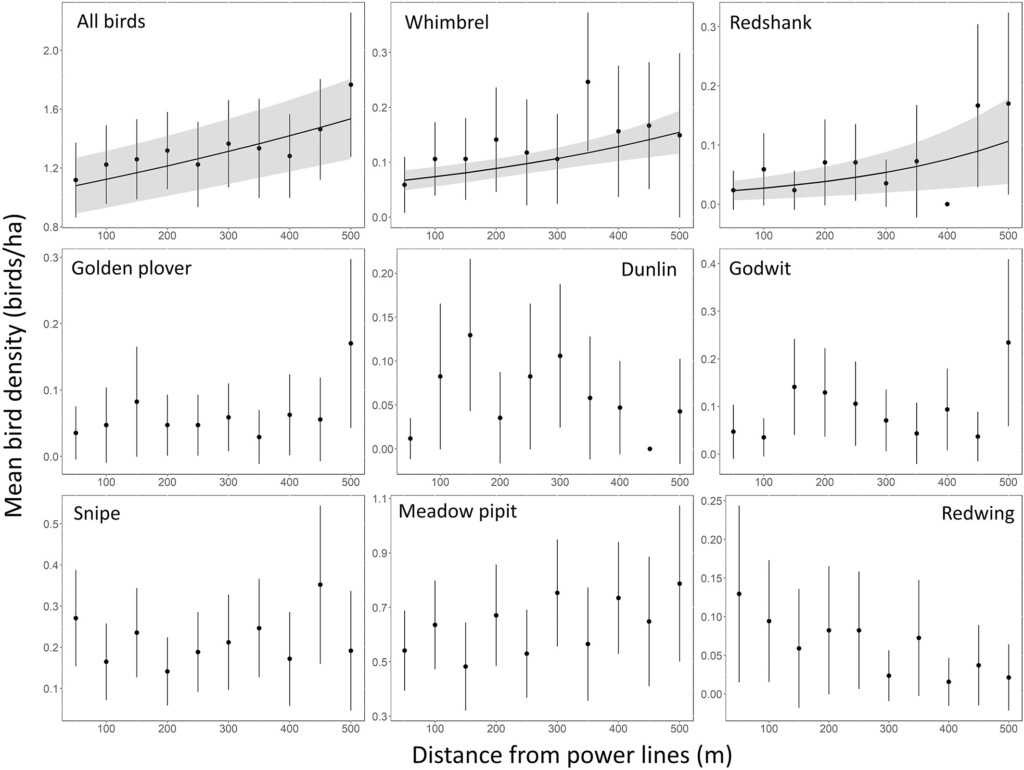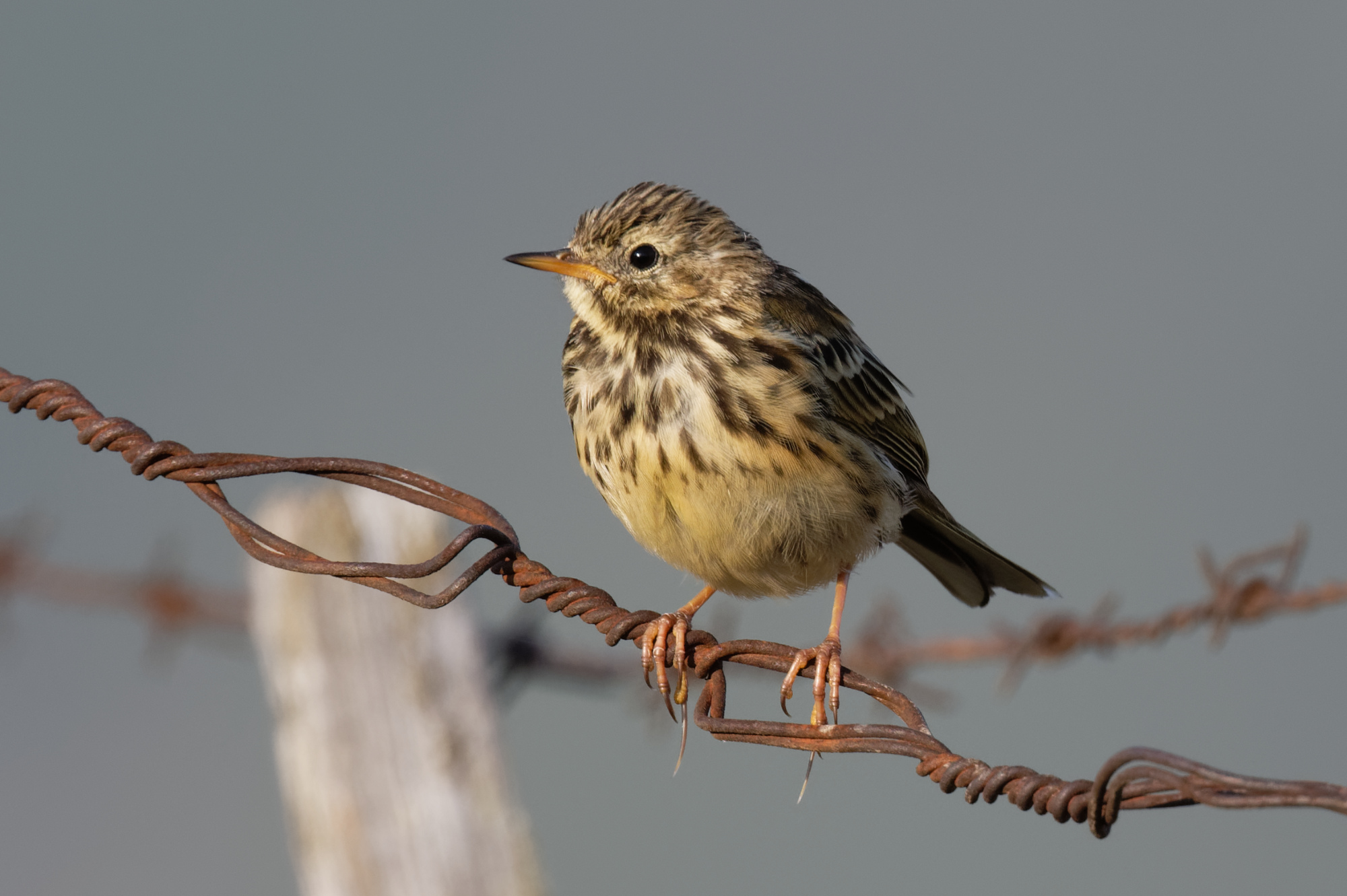 LINKED PAPER Effects of overhead power-lines on the density of ground-nesting birds in open sub-arctic habitats. Pálsdóttir, A. E., Gill, J. A., Pálsson, S., Alves, J. A., Méndez, V., Þórisson, B., & Gunnarsson, T. G. 2022. IBIS. DOI: 10.1111/ibi.13089. VIEW
LINKED PAPER Effects of overhead power-lines on the density of ground-nesting birds in open sub-arctic habitats. Pálsdóttir, A. E., Gill, J. A., Pálsson, S., Alves, J. A., Méndez, V., Þórisson, B., & Gunnarsson, T. G. 2022. IBIS. DOI: 10.1111/ibi.13089. VIEW
A vast network of more than 300,000 kilometers of overhead power lines crisscrosses the European landscape (Jorge & Hertwich 2014). As the expansion of electric infrastructure continues, it is important to understand the impact of these anthropogenic structures on local wildlife. While certain species might benefit from the construction of power lines, such as White Storks (Ciconia ciconia) that nest on transmission towers (Moreira et al. 2017), other species will be negatively affected by increased collision risk or habitat loss (D’Amico et al. 2018). A recent study focused on bird species breeding in Iceland, a country where electricity has to be transported over large distances from hydropower and geothermal sources. How do the Icelandic birds cope with this network of power lines?
Eight species
During the spring of 2019, Aldís Erna Pálsdóttir and her colleagues walked transects along electric power lines in the southwestern part of Iceland. They counted all breeding birds within 100 meters of the power lines. The researchers recorded 21 different species, but they focused on the eight most common species, namely Dunlin (Calidris alpina), Black-tailed Godwit (Limosa limosa), Golden Plover (Pluvialis apricaria), Meadow Pipit (Anthus pratensis), Common Redshank (Tringa totanus), Redwing (Turdus iliacus), Snipe (Gallinago gallinago), and Eurasian Whimbrel (Numenius phaeopus). Statistical analyses revealed that the combined breeding density of the eight study species was lowest close to power lines and increased with distance. Only two species (Eurasian Whimbrel and Common Redshank) showed significant increases whereas the remaining six species showed no changes.  Figure 1. The density of breeding birds increases with distance from power lines for all the eight most abundant species combined and for the Eurasian Whimbrel and Common Redshank. This pattern does not emerge in the other six species.
Figure 1. The density of breeding birds increases with distance from power lines for all the eight most abundant species combined and for the Eurasian Whimbrel and Common Redshank. This pattern does not emerge in the other six species.
Mechanisms
These findings suggest that breeding birds tend to avoid power lines, but the underlying mechanism remains unknown. Perhaps the birds avoid the electromagnetic field that emanates from the power lines (Engels et al. 2014). Or survival rates might be lower around power lines due to increased collision risks or higher predation rates (i.e. birds of prey can perch on transmission towers, DeGregorio et al. 2014). Plenty of hypotheses to explore. But regardless of the underlying mechanism, this study shows that “power lines can influence the breeding density of ground-nesting bird species in their vicinity and that accounting for such effects when planning future infrastructure will be imperative.”
References
D’Amico, M., Catry, I., Martins, R.C., Ascensão, F., Barrientos, R. & Moreira, F. (2018). Bird on the wire: landscape planning considering costs and benefits for bird populations coexisting with power lines. Ambio 47: 650–656. VIEW
DeGregorio, B.A., Weatherhead, P.J. & Sperry, J.H. (2014). Power lines, roads, and avian nest survival: effects on predator identity and predation intensity. Ecology and Evolution 4: 1589–1600. VIEW
Engels, S., Schneider, N.-L., Lefeldt, N., Hein, C.M., Zapka, M., Michalik, A., Elbers, D., Kittel, A., Hore, P.J. & Mouritsen, H. (2014). Anthropogenic electromagnetic noise disrupts magnetic compass orientation in a migratory bird. Nature 509: 353–356. VIEW
Jorge, R.S. & Hertwich, E.G. (2014). Grid infrastructure for renewable power in Europe: the environmental cost. Energy 69: 760–768. VIEW
Moreira, F., Encarnação, V., Rosa, G., Gilbert, N., Infante, S., Costa, J., D’Amico, M., Martins, R.C. & Catry, I. (2017). Wired: impacts of increasing power line use by a growing bird population. Environmental Research Letters 12: 024019. VIEW
Image credits
Top right: Meadow Pipit (Anthus pratensis) | Marie-Lan Taÿ Pamart | CC BY-SA 4.0 Wikimedia Commons Blog posts express the views of the individual author(s) and not those of the BOU. If you want to write about your research in #theBOUblog, then please see here



